Ready to transform your dinner routine with the most incredible thai coconut curry shrimp you've ever tasted? This recipe brings together the perfect balance of creamy coconut milk, aromatic spices, and tender shrimp in a way that'll have your family asking for seconds every single time. I've been making this thai coconut curry shrimp for years, and it never fails to impress guests or satisfy those weeknight cravings.
What makes this thai coconut curry shrimp so special is how it captures all those complex Thai flavors without requiring a trip to specialty stores or hours in the kitchen. You'll have a restaurant-quality thai coconut curry shrimp ready in just 30 minutes, using ingredients you can find at any grocery store.
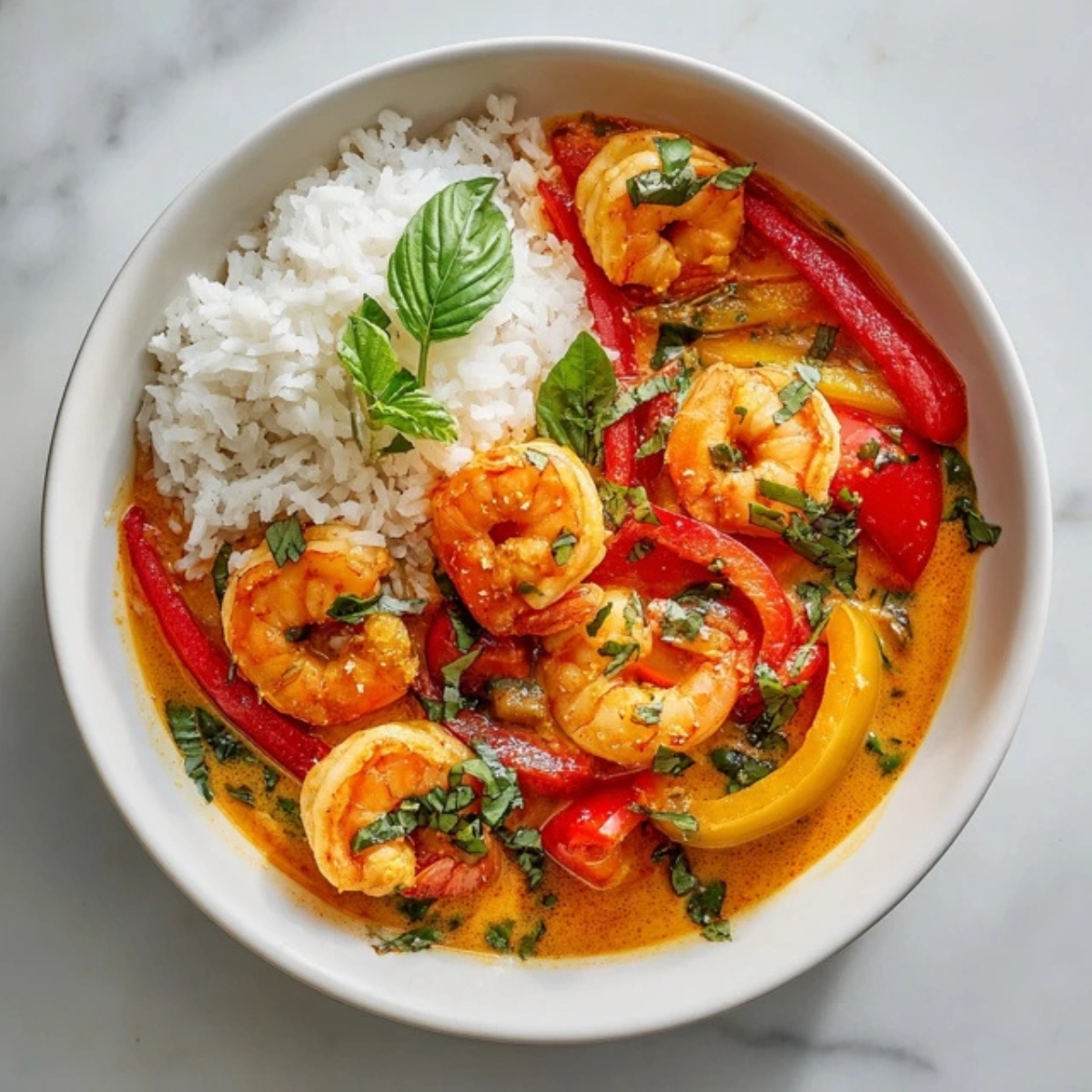
Background & Why This Thai Coconut Curry Shrimp Recipe Stands Out
This isn't just another shrimp curry; it's a carefully crafted thai coconut curry shrimp that balances sweet coconut milk with the perfect amount of heat and aromatic herbs. The secret lies in building layers of flavor, starting with properly toasted red curry paste and finishing with fresh lime and cilantro that brighten every bite.
The beauty of this thai coconut curry shrimp lies in its versatility and forgiving nature. Whether you're cooking for a weeknight family dinner or entertaining guests, this thai coconut curry shrimp adapts perfectly. The rich, velvety sauce clings beautifully to the shrimp while the vegetables add texture and color, making each spoonful a delightful experience that transports you straight to the streets of Bangkok.
Jump to:
Ingredients
- Large shrimp, peeled and deveined
- Full-fat coconut milk
- Red curry paste
- Vegetable oil
- Large onion, sliced
- Red bell pepper, sliced
- Yellow bell pepper, sliced
- Garlic, minced
- Fresh ginger, minced
- Fish sauce
- Brown sugar
- Lime juice
- Fresh Thai basil leaves
- Fresh cilantro, chopped
- Salt to taste
- Jasmine rice for serving
Optional Ingredients
- Lemongrass stalk, bruised
- Kaffir lime leaves
- Thai chili, minced (for extra heat)
- Baby spinach
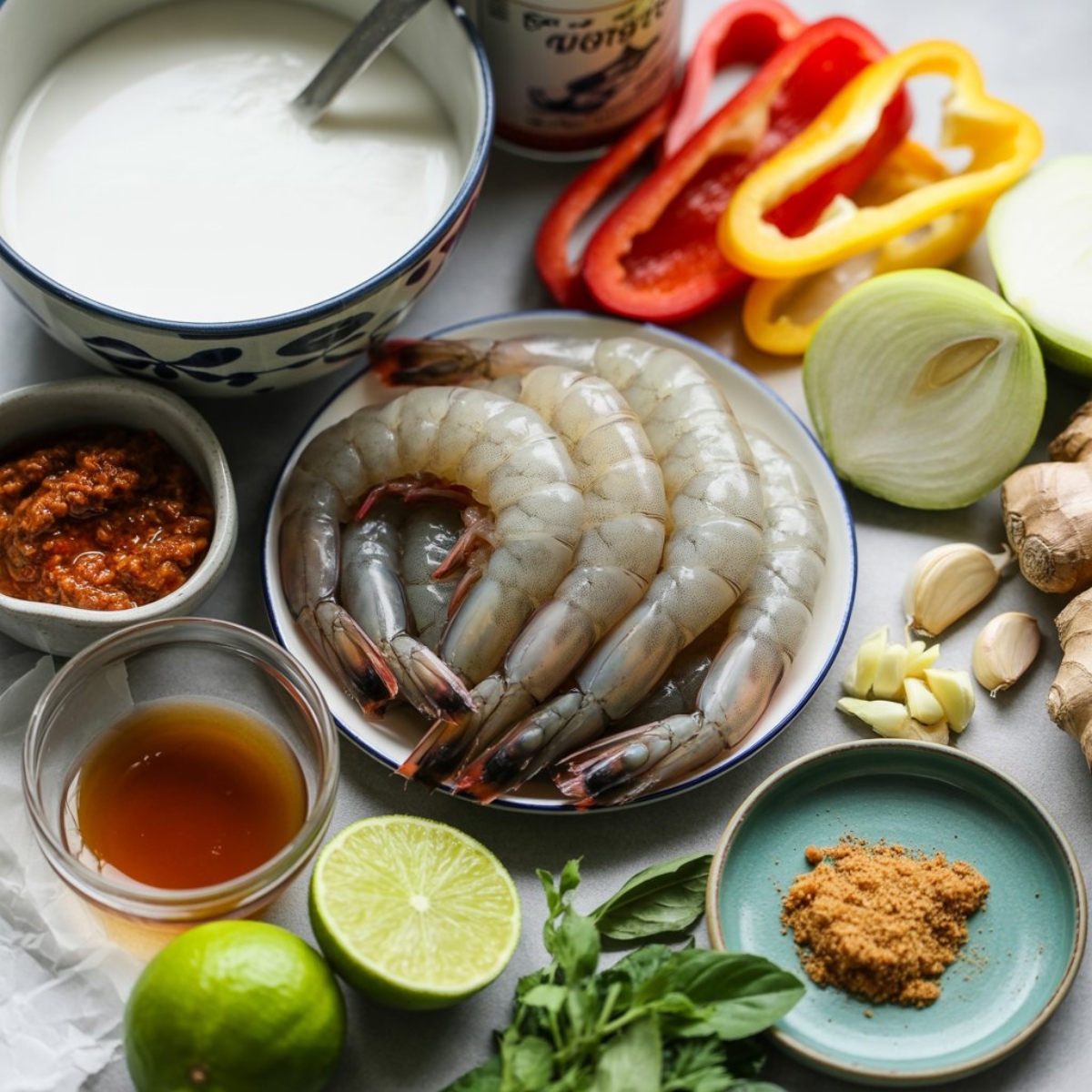
See recipe card for quantities.
Instructions
Prepare Your Ingredients
- Pat the shrimp completely dry with paper towels and season lightly with salt.
- Slice all vegetables uniformly for even cooking.
- Have all ingredients measured and ready; this recipe moves quickly once you start cooking.
Build the Curry Base
- Heat oil in a large skillet or wok over medium-high heat.
- Add red curry paste and cook for 2-3 minutes, stirring constantly until fragrant and slightly darkened.
- Pour in the thick portion of coconut milk (usually at the top of the can) and stir vigorously to combine with the curry paste.
- Add garlic and ginger, cooking for another minute until aromatic.
Add Vegetables and Seasonings
- Add sliced onions and bell peppers to the pan, stirring to coat with the curry mixture.
- Pour in the remaining coconut milk, fish sauce, and brown sugar.
- Bring the mixture to a gentle simmer and cook for 8-10 minutes until vegetables are tender-crisp.
- Season with salt and adjust sweetness or saltiness to taste.
Finish with Shrimp and Fresh Herbs
- Add the prepared shrimp to the simmering curry.
- Cook for 3-4 minutes until shrimp turn pink and are just cooked through.
- Remove from heat and stir in lime juice, Thai basil, and half the cilantro.
- Taste and adjust seasonings; serve immediately over jasmine rice with remaining cilantro as garnish.
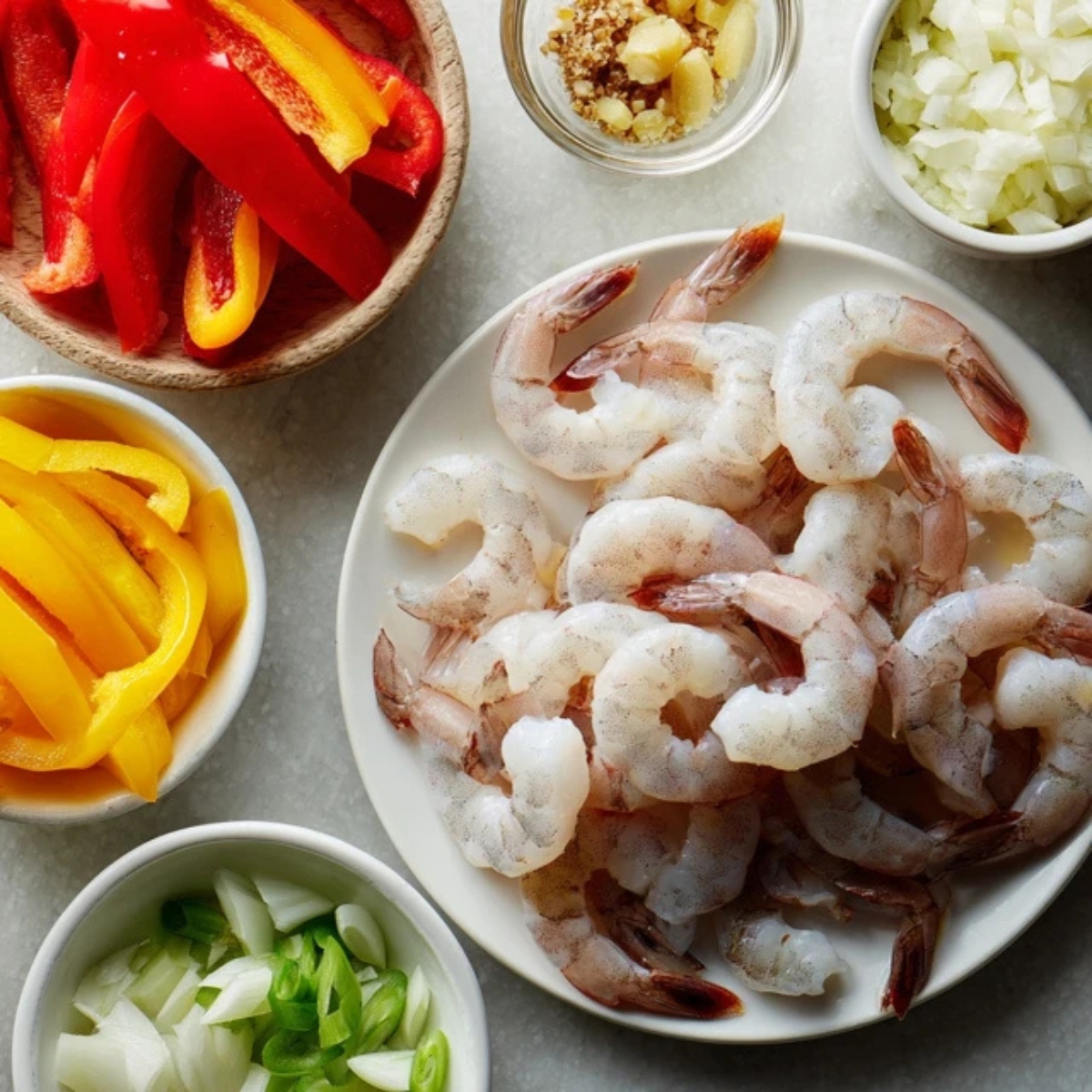
- Step 1: Prepare Your Ingredients
Pat shrimp dry and prep all ingredients before cooking.
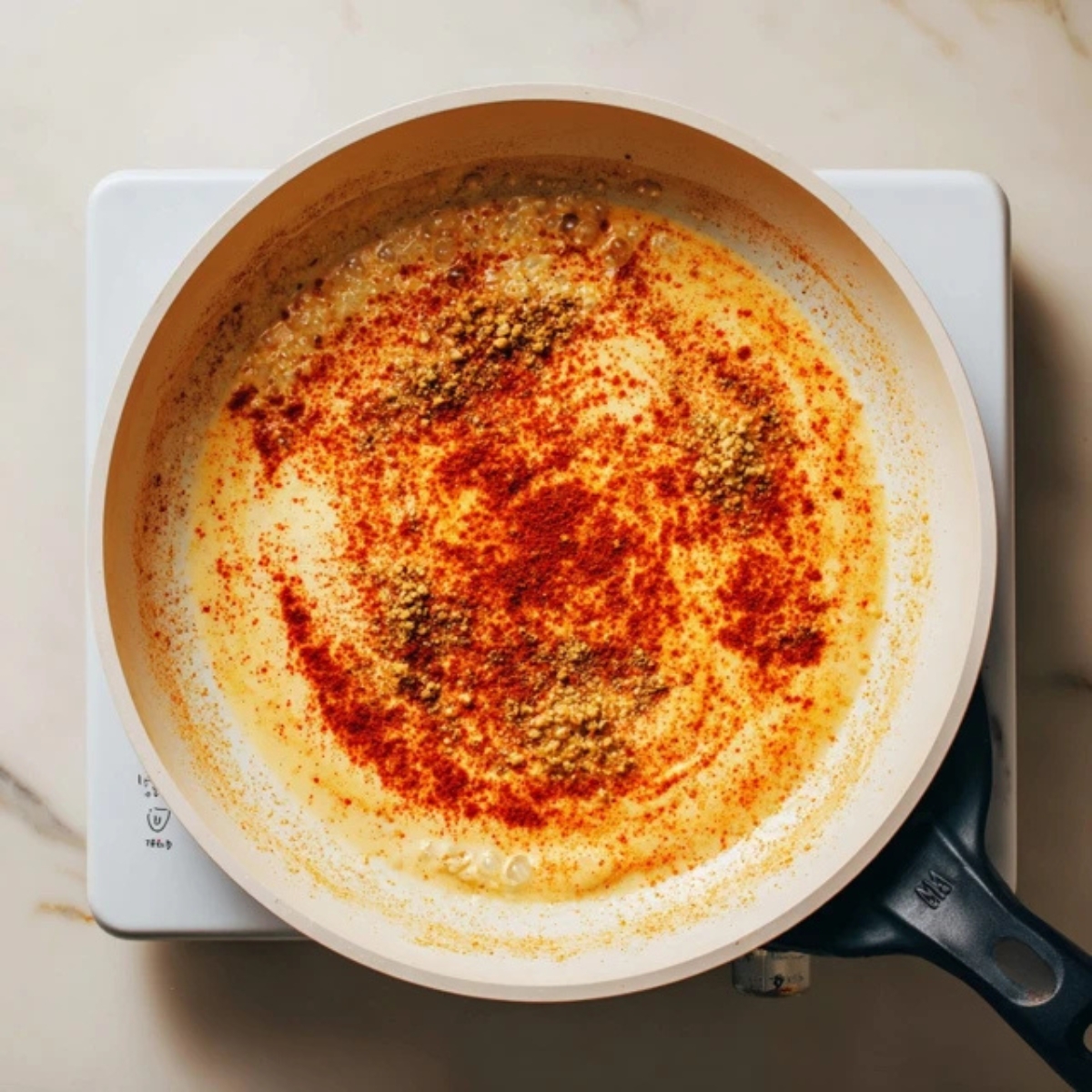
- Step 2: Build the Curry Base
Toast red curry paste in oil, then add coconut milk, garlic, and ginger.
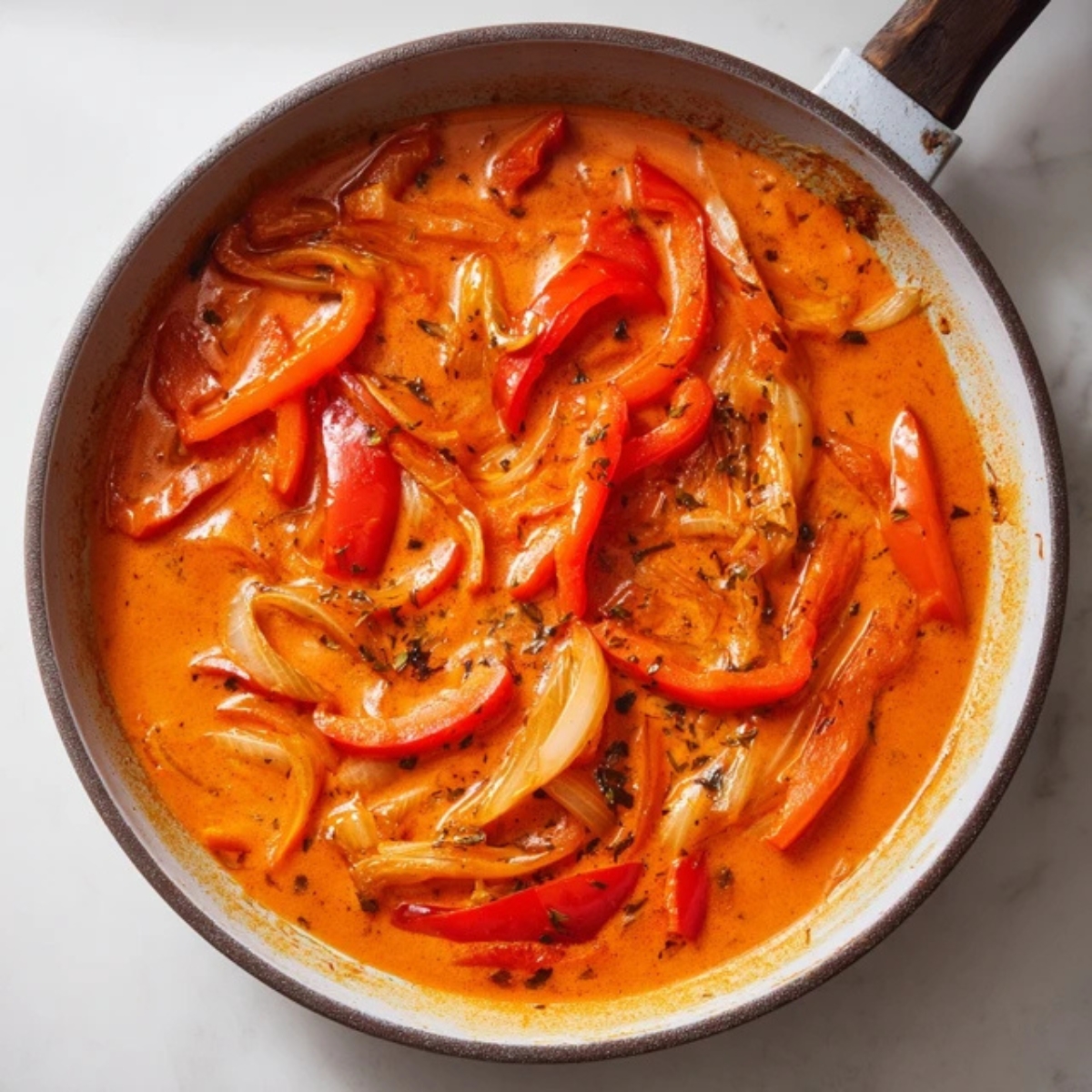
- Step 3: Add Vegetables and Seasonings
Simmer bell peppers and onions in the curry with fish sauce and sugar.
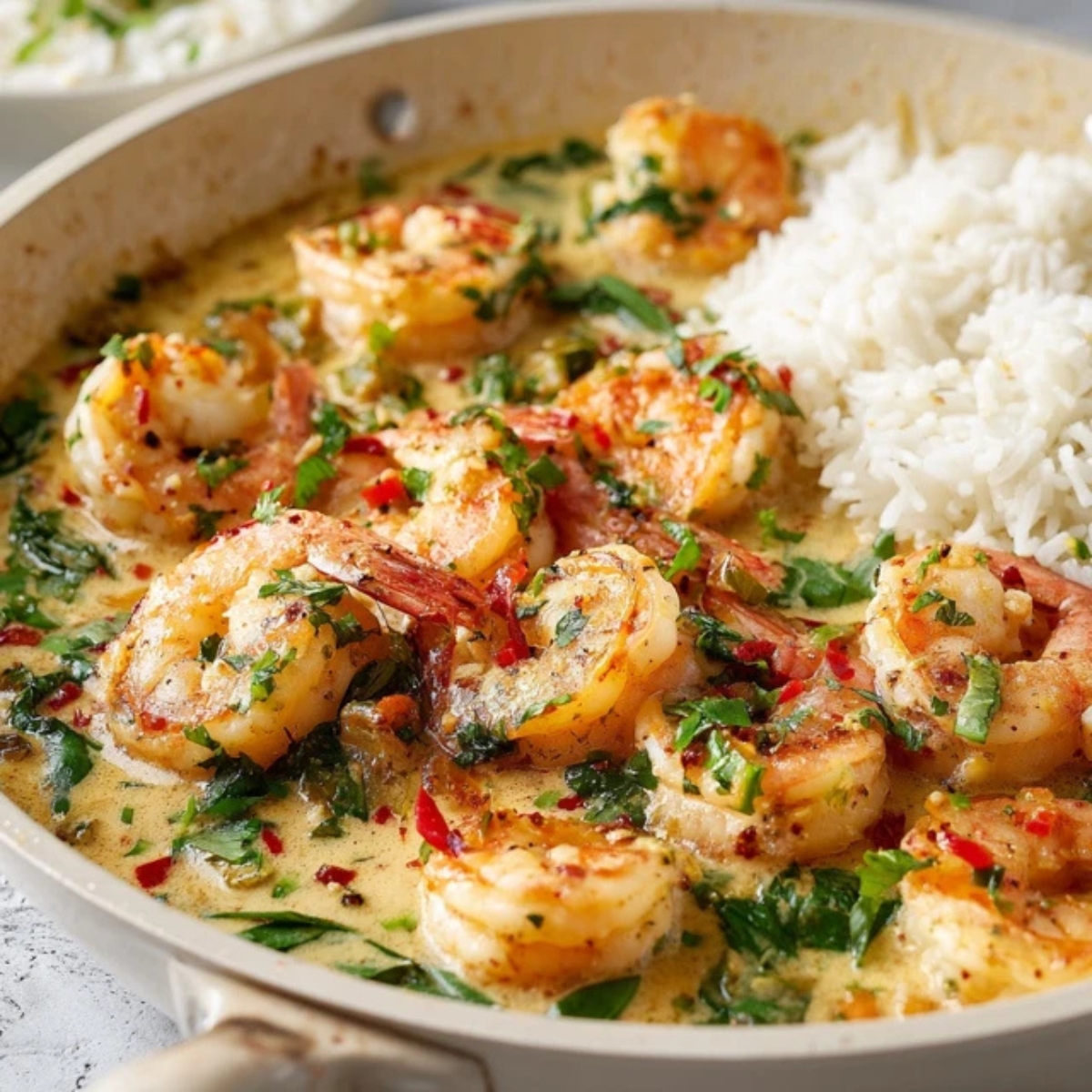
- Step 4: Finish with Shrimp and Fresh Herbs
finished Thai coconut curry shrimp with fresh herbs
Expert Cooking Tips
Creating the perfect thai coconut curry shrimp requires attention to a few key techniques that make all the difference:
Toast Your Curry Paste: Always cook your red curry paste in oil before adding liquids. This step releases the essential oils and deepens the flavor significantly. You'll know it's ready when it becomes fragrant and slightly darker in color.
Use Full-Fat Coconut Milk: Light coconut milk won't give you that rich, creamy texture that makes this dish so satisfying. The thick cream that separates at the top is your friend; use it first to create a proper curry base.
Don't Overcook the Shrimp: Shrimp cook incredibly fast and become rubbery when overdone. Add them last and remove the pan from heat as soon as they turn pink and curl slightly.
Balance Your Flavors: Thai cuisine is all about balance. Taste your curry and adjust; add more fish sauce for saltiness, brown sugar for sweetness, lime juice for acidity, or curry paste for heat.
Prep Everything First: This recipe comes together quickly, so have all ingredients measured and ready before you start cooking. This prevents burning and allows you to focus on building flavors.
Recipe Variations & Substitutions
This versatile thai coconut curry shrimp adapts beautifully to different dietary needs and preferences:
Protein Variations: Substitute shrimp with chicken thighs (cook longer), firm white fish, scallops, or tofu for vegetarian options. Each protein brings its own unique texture while absorbing those incredible Thai flavors.
Vegetable Options: Beyond bell peppers, try adding snap peas, baby corn, bamboo shoots, or eggplant. Leafy greens like spinach or bok choy work wonderfully when added in the last few minutes of cooking.
Spice Level Adjustments: For milder curry, use less curry paste or choose a mild variety. For more heat, add fresh Thai chilies, extra curry paste, or a dash of sriracha. Always taste as you go.
Dietary Modifications: Make it paleo by serving over cauliflower rice instead of jasmine rice. For keto-friendly versions, load up on low-carb vegetables and skip the sugar. Gluten-free diners can enjoy this as-is, just check your curry paste ingredients.
Sauce Consistency: Prefer thicker curry? Simmer longer uncovered to reduce the liquid. Want it thinner? Add a splash of chicken broth or water. The coconut milk base is very forgiving.
Equipment Recommendations
The right tools make preparing this thai coconut curry shrimp much easier and more enjoyable:
Large Skillet or Wok: A wide, heavy-bottomed pan distributes heat evenly and prevents burning the curry paste. A wok is traditional and perfect for stirring, but a large skillet works just as well.
Sharp Chef's Knife: Essential for efficiently prepping vegetables and ensuring uniform cuts that cook evenly.
Wooden Spoon or Heat-Resistant Spatula: Perfect for stirring the curry paste and preventing scratching of non-stick surfaces.
Rice Cooker or Heavy-Bottomed Pot: For perfect jasmine rice every time; consistent results make the meal complete.
Storage & Meal Prep Tips
This thai coconut curry shrimp stores beautifully and often tastes even better the next day:
Refrigerator Storage: Store leftovers in airtight containers for up to 3 days in the refrigerator. The flavors continue to meld and develop, making reheated portions incredibly flavorful.
Freezing Guidelines: While best enjoyed fresh, you can freeze portions for up to 2 months. Note that the texture of shrimp may change slightly after freezing, but the flavors remain excellent.
Reheating Instructions: Gently reheat in a saucepan over low heat, stirring occasionally. Add a splash of coconut milk or water if the sauce seems too thick. Microwave reheating works but may cause the sauce to separate slightly.
Meal Prep Strategy: Prepare all vegetables and make the curry base ahead of time. Store separately and add fresh shrimp when ready to serve for the best texture and flavor.
Grandma's Secret That Changed Everything
Here's something most recipes won't tell you about making exceptional thai coconut curry shrimp: the secret isn't just in the ingredients, it's in the temperature control and timing. My Thai grandmother taught me to always start the curry paste at medium heat, never high, and to listen for the gentle sizzling sound that tells you the oils are releasing properly.
The second secret to perfect thai coconut curry shrimp lies in the resting technique. After removing from heat, let your curry sit for 2-3 minutes before serving. This brief rest allows all the flavors to settle and the coconut milk to reach the perfect creamy consistency. It's a simple step that transforms good curry into absolutely incredible curry that rivals any restaurant version.
FAQ
What is the secret to Thai curry?
The secret to authentic Thai curry lies in properly toasting your curry paste in oil before adding liquids, using full-fat coconut milk, and balancing the sweet, salty, sour, and spicy elements. Quality thai coconut curry shrimp depends on building layers of flavor rather than rushing the process.
What goes with coconut curry shrimp?
Jasmine rice is the classic pairing for thai coconut curry shrimp, but you can also serve it with rice noodles, quinoa, or cauliflower rice. Fresh vegetables like cucumber salad, steamed broccoli, or Thai-style green beans complement the rich curry beautifully.
What is coconut shrimp made of?
Traditional coconut shrimp features shrimp coated in shredded coconut and fried until crispy. However, thai coconut curry shrimp is completely different; it's shrimp simmered in a fragrant curry sauce made with coconut milk, curry paste, and aromatic herbs and spices.
Does Thai curry paste have shrimp in it?
Most commercial Thai curry pastes are vegetarian and don't contain shrimp, but some traditional versions may include shrimp paste or fish sauce. Always check the ingredient list if you have allergies or dietary restrictions, especially when making thai coconut curry shrimp for guests.
Your Next Thai Food Adventure Awaits
Now that you've mastered this incredible thai coconut curry shrimp, your kitchen has become a gateway to authentic Thai flavors that'll impress everyone at your table. The beauty of this recipe lies not just in its delicious results, but in how it builds your confidence to explore more Thai cooking adventures.
Don't stop here; your thai coconut curry shrimp skills are just the beginning of an amazing culinary journey. Try pairing this dish with our crispy Coconut Shrimp for a coconut-themed feast, or follow it up with our rich and indulgent Marry Me Shrimp Pasta for your next special dinner. Both recipes complement the flavors you've just mastered while taking your taste buds in exciting new directions.
With love from my kitchen to yours,
Taylor Monroe
Related
Looking for other recipes like this? Try these:
Pairing
These are my favorite dishes to serve with this thai coconut curry shrimp recipe:

Thai Coconut Curry Shrimp Recipe
Equipment
- Large skillet or wok For even cooking and heat control
- Wooden Spoon For stirring curry base
- Chef’s knife For prepping vegetables
- Rice cooker Optional, for jasmine rice
Ingredients
Main Ingredients
- 2 lb Large shrimp Peeled and deveined
- 2 cans Coconut milk Full-fat, 14 oz each
- 3 tablespoon Red curry paste Use more or less to taste
- 2 tablespoon Vegetable oil For toasting curry paste
- 1 Large onion Thinly sliced
- 1 Red bell pepper Sliced
- 1 Yellow bell pepper Sliced
- 3 cloves Garlic Minced
- 1 tablespoon Fresh ginger Minced
- 2 tablespoon Fish sauce Adds umami and saltiness
- 1 tablespoon Brown sugar Balances heat and acidity
- 2 tablespoon Lime juice Freshly squeezed
- 0.5 cup Thai basil leaves Fresh
- 0.25 cup Fresh cilantro Chopped, plus more for garnish
- Salt To taste
- Jasmine rice For serving
Optional Add-ins
- 1 Lemongrass stalk Bruised
- 2 Kaffir lime leaves Add during simmering
- 1 Thai chili Minced, for extra heat
- 1 cup Baby spinach Stir in at the end
Instructions
- Prep ingredients
- Toast curry paste
- Stir in coconut cream
- Add garlic and ginger
- Sauté vegetables
- Add liquids and simmer
- Add shrimp
- Stir in herbs and lime
- Rest before serving
- Serve with jasmine rice






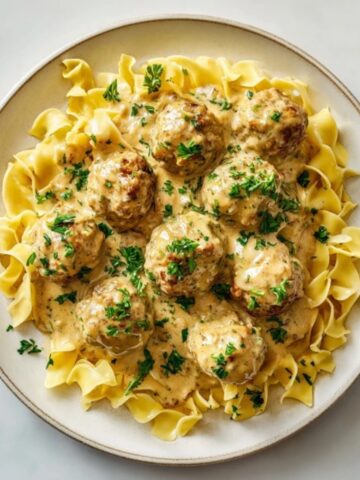
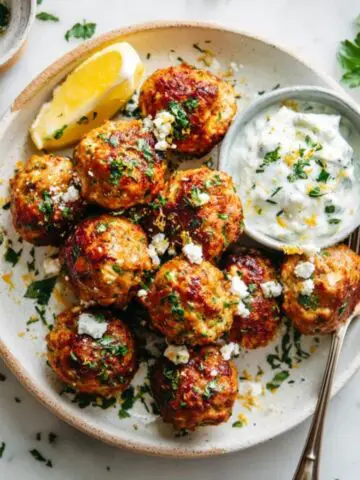
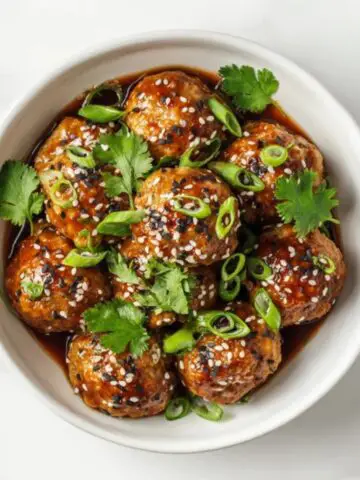
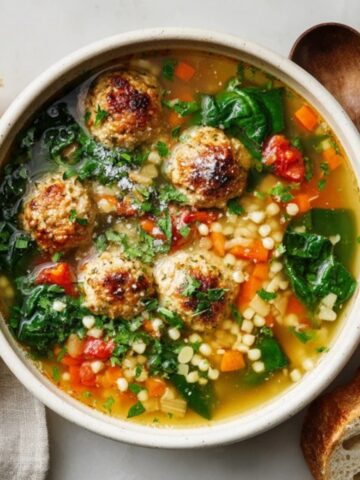
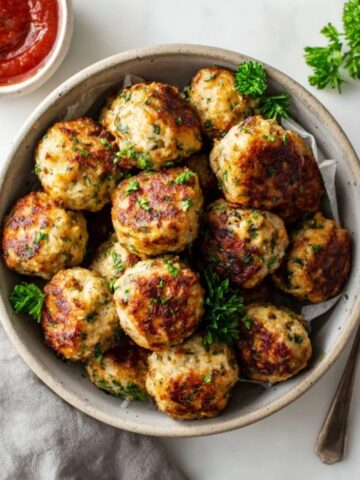
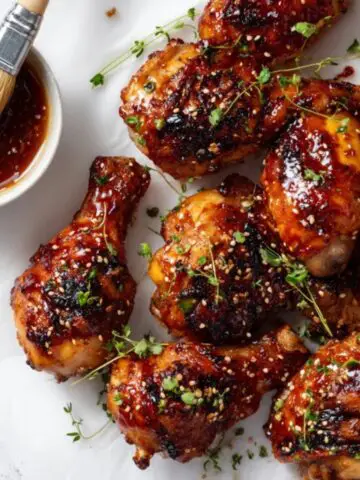
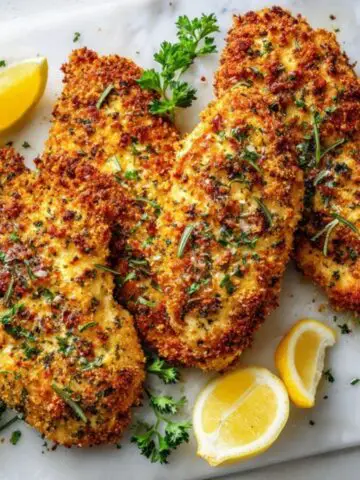
Leave a Reply